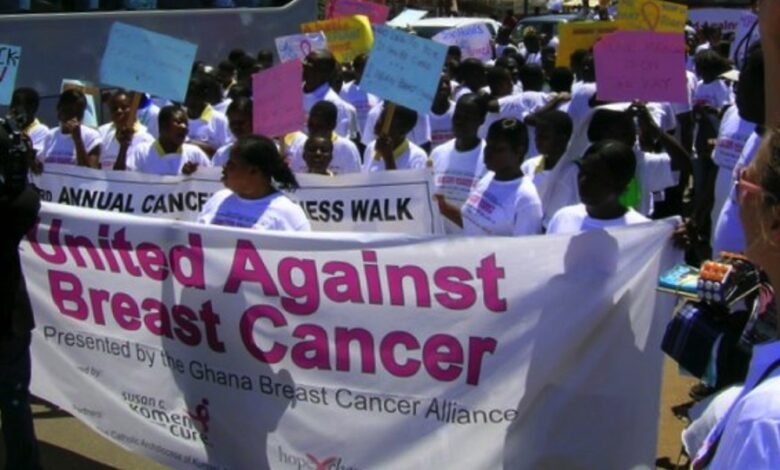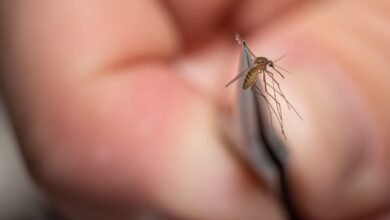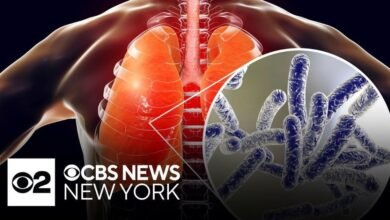Unseen Danger: The Silent Killer Among Women You Need to Know!

Understanding Breast Cancer: Awareness, Symptoms, and Treatment
Breast cancer remains one of the most common forms of cancer affecting women worldwide, although it can also impact men. Understanding breast cancer, its symptoms, risk factors, and treatment options is essential for early detection and effective management. This comprehensive blog post aims to provide an in-depth exploration of breast cancer, touching upon its prevalence, causes, signs and symptoms, diagnosis, staging, and treatment methodologies.
The Prevalence of Breast Cancer
Breast cancer is a significant global health concern, accounting for nearly 12% of all new cancer cases worldwide. The World Health Organization (WHO) estimates that approximately 2.3 million women were diagnosed with breast cancer in 2020 alone, underscoring its status as the most commonly diagnosed cancer among women. Notably, breast cancer rates vary by region, influenced by a myriad of factors, including genetics, lifestyle, and access to healthcare.
What Causes Breast Cancer?
The exact cause of breast cancer is complex and involves a combination of genetic, hormonal, and environmental factors. Some women may inherit genetic mutations that increase their risk, such as BRCA1 and BRCA2, making them more susceptible to developing breast cancer.
Other significant risk factors include:
- Age: The risk of breast cancer increases as a woman ages, with most cases diagnosed in women over 55.
- Family History: A family history of breast cancer can substantially raise an individual’s risk.
- Personal History: Women who have previously had breast cancer are at a higher risk of developing it again.
- Hormonal Factors: Prolonged exposure to estrogen, including starting menstruation early and entering menopause late, can elevate risk.
- Lifestyle Choices: Factors like obesity, lack of physical activity, alcohol consumption, and smoking can all contribute to breast cancer risk.
Understanding these risk factors can help individuals make informed health decisions and discussions with their healthcare providers.
Recognizing the Symptoms
Identifying symptoms of breast cancer at an early stage can vastly improve outcomes and treatment success. Common symptoms to watch for include:
- Lumps or Masses: Any new lump or mass in the breast or underarm area should be evaluated by a healthcare professional.
- Changes in Breast Size or Shape: Notable changes can indicate potential issues and should be assessed.
- Skin Changes: Any alterations in breast skin texture, including dimpling, puckering, or redness, may signify underlying problems.
- Nipple Changes: Discharge from the nipple or a change in its appearance may also be a symptom.
- Pain: While many breast cancers are painless, any persistent pain in the breast should be investigated.
Awareness of these symptoms is crucial for early intervention and management, which significantly enhances survival rates.
Screening and Diagnosis
Screening and early detection are vital components in combating breast cancer. The following methods are commonly employed for breast cancer screening:
- Clinical Breast Exams: Healthcare providers perform physical examinations to feel for lumps or other abnormalities.
- Mammograms: These X-ray examinations are the gold standard for breast cancer screening, particularly for women over 40.
- Ultrasounds: This imaging technique can help distinguish between solid masses and fluid-filled cysts.
- Biopsy: If a suspicious area is identified, a biopsy may be performed to determine whether cancer cells are present.
Early detection can lead to timely treatment and significantly improve survival rates, highlighting the importance of routine screenings.
Staging of Breast Cancer
Staging is a crucial aspect of breast cancer analysis, determining the extent of cancer spread within the body. Understanding the stage is essential for identifying the most appropriate treatment options. The common stages of breast cancer are:
- Stage 0: Known as ductal carcinoma in situ (DCIS), where cancer cells are present but have not invaded surrounding tissues.
- Stage I: Invasive cancer is present, but the tumor is small and has not spread beyond the breast.
- Stage II: Larger tumors or cancer that has begun to spread to nearby lymph nodes.
- Stage III: Locally advanced cancer that has spread to nearby tissues and significantly involved lymph nodes.
- Stage IV: Metastatic cancer that has spread to other organs and distant sites in the body.
Each level of staging serves to guide treatment decisions, calculate prognosis, and aid in establishing clinical trials.
Treatment Options for Breast Cancer
The treatment of breast cancer is highly personalized and depends on various factors, including cancer type, stage, and individual patient considerations. Common treatment modalities include:
- Surgery: Surgical options can include lumpectomy (removal of the tumor), mastectomy (removal of one or both breasts), and sentinel node biopsy.
- Radiation Therapy: This treatment involves using high-energy waves to target and destroy cancer cells, often employed post-surgery to eliminate residual disease.
- Chemotherapy: Systemic treatment using drugs to kill cancer cells is commonly performed before or following surgery.
- Hormone Therapy: Used for hormone receptor-positive cancers, hormone therapy helps block the body’s natural hormones that can foster cancer growth.
- Targeted Therapy: This emerging treatment focuses on specific characteristics of cancer cells, aiming to destroy them while sparing healthy cells.
- Immunotherapy: A newer approach that utilizes the body’s immune system to fight cancer cells.
Such diverse treatment options highlight the need for a tailored approach to meet the unique challenges presented by each case of breast cancer.
Living Beyond Breast Cancer
After diagnosis and treatment, many women emerge with a deeper understanding of their health and the significance of routine medical care. Survivors often advocate for awareness, emphasizing the importance of regular screenings and healthy lifestyle choices to mitigate risk.
Support systems play an essential role in recovery; connecting with support groups can provide emotional support and help share experiences and advice.
Women are encouraged to maintain a healthy lifestyle, including regular exercise, balanced nutrition, and stress management practices. These elements can significantly affect long-term health outcomes and overall well-being.
Conclusion
Breast cancer is a complex condition requiring comprehensive awareness, understanding of symptoms, risk factors, and treatment strategies. Awareness and early detection can considerably improve outcomes. It is imperative for individuals to engage in discussions with healthcare professionals and remain proactive in screening efforts.
Furthermore, ongoing research and advances in treatment options continue to offer new hope for those diagnosed with breast cancer. By fostering an environment of support and advocacy around breast cancer awareness and prevention, we can empower individuals and communities to combat this disease effectively.
Summary
- Breast cancer is the most frequently diagnosed cancer among women globally.
- Various factors contribute to breast cancer risk, including genetics, age, and lifestyle choices.
- Common symptoms of breast cancer include lumps, changes in size, and skin alterations.
- Screening methods such as mammograms and biopsies are critical for early detection.
- Staging of breast cancer helps determine treatment options and prognosis.
- Treatment options range from surgery and radiation to chemotherapy and targeted therapies.
- Advocating for routine screenings and healthy lifestyles is crucial for survivors and those at risk.





